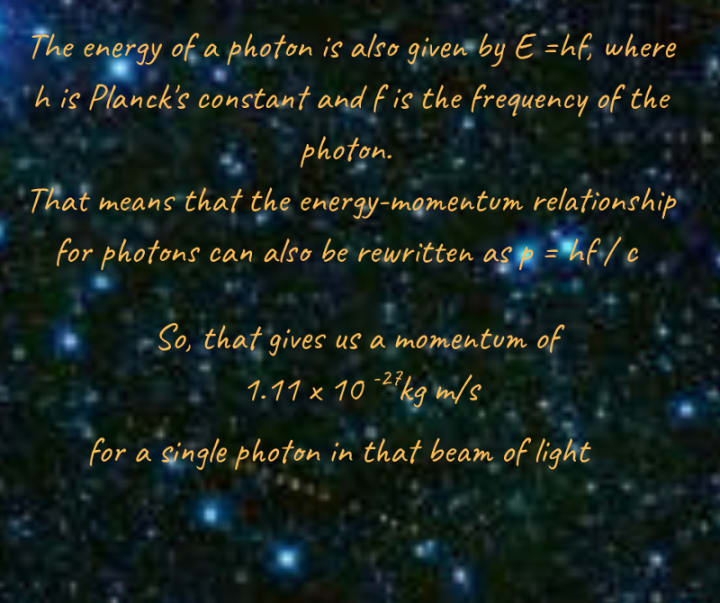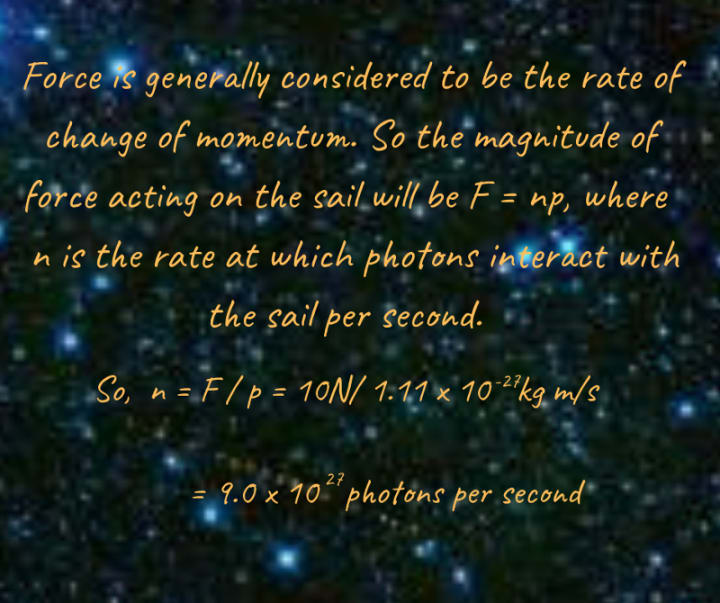The Physics of Solar Sails. How Photons Have Momentum Without Mass.
Exploring the mechanism that powers Solar Sail based spacecraft such as the Planetary Society’s LightSail 2.

The Planetary Society’s LightSail 2 project launches from Kennedy Space Center in Florida, as part of the US Air Force’s STP-2 mission. It will be carried by a SpaceX Falcon Heavy rocket, enclosed within Prox-1 — a small satellite built by Georgia Tech students.
The aim of the Planetary Society is to demonstrate that solar sailing is a viable means of propulsion for CubeSats — small, standardized spacecraft that are part of a global effort to lower the cost of space exploration.
The mission follows previous efforts from the Planetary Society, the COSMOS 1 — lost due to rocket failure in 2005, and LightSail — which successfully completed a test flight in 2015.

The name ‘light sail’ may immediately conjure the temptation to draw an analogy with sails abroad small boats in a more terrestrial setting. But, where-as sailboats are propelled by winds here on Earth, light sails are not propelled by stellar winds — or solar winds — from the Sun. Of course, stellar winds do exist, consisting of material ‘boiled off’ from the Sun, but they tend to vary in strength and direction.
Instead, light sails are powered by electromagnetic radiation — photons — from the Sun. But, if winds here on Earth move a sailboat by imparting momentum to the sail. And momentum is dependant on mass and velocity. So, how does a photon — a massless particle — impart momentum to a solar sail?
The answer lies in Einstein’s theory of Special Relativity. (NB — to follow the next paragraphs readers might like to check out ‘Zipping through Special Relativity’ — introducing the basics of relativity)
Einstein vs Newton: The Photon Mass/Momentum Conundrum

According to Newtonian physics, simply put, light sails are impossible. The Newtonian definition of momentum — which is still the definition you will get if you Google the term — is the product of a moving body’s mass and velocity.
Part of the formulation of Einstein’s theory of Special Relativity is the idea that things like momentum and energy can be represented as mathematical objects known as four-tensors. This means that transforming quantities between different reference frames in relativity is pretty straight forward.
Amongst these four-tensor quantities, we have things like the four-position and the four-velocity. As Newtonian mechanics suggest, we can obtain four-momentum by multiplying the four-velocity by mass.
This still doesn’t remove momentum’s dependence on mass, but the next step will.
Relativity depends on conversions known as ‘Lorentz transformations’ — because of the way the four-momentum transforms under these rules, it becomes entwined inseparably with energy. This means that in much the same way that Special Relativity unites space and time as a single entity — spacetime — it unites energy and momentum.
The consequence of this is that what appears as just energy to one observer, appears as energy and momentum to another. So regardless of the inertial reference frame of the observer, the momentum of a particle (p) is given by the following relationship.

That relationship has an interesting consequence for massless particles. You can see by this, that even if the mass is zero — as is the case with photons — momentum doesn’t disappear as it does in Newtonian calculations.
This leaves the momentum of photons defined as follows:

So, with that in mind, what kind of force would be needed to move a solar sail craft, and just how many photons would that take?
Powering the journey of a solar sail based craft
If you’re now wondering just how much momentum a photon could possibly carry, the answer is, not a lot. Let’s say for a beam of monochromatic — single frequency — light with a frequency of 5.00 x 10¹⁴ Hz.

Fortunately, the Sun produces a lot of photons. Let’s say that the craft requires a push of 10 Newtons, just how many photons does it take to impart that kind of momentum?

That’s roughly 10 followed by 27 zeroes photons per second just impact a small amount of force.
This leaves the designers of light sail based crafts a clear dilemma — the sails need to be of a significant enough size to capture sufficient photons to impart momentum, but also light enough that demands for momentum are not too great.
This requires working with some extraordinary materials.
The LightSail 2’s sail is roughly the size of a boxing ring — about 344 ft² — and is constructed of mylar with a thickness of just 4.5 microns — making it less than the width of a human hair. This makes it clearly an incredible feat of human engineering.
It builds upon the success of Japan’s Ikaros solar sail launched in 2010, which — rather than staying in orbit around Earth — embarked of an interplanetary journey to Venus and beyond.
Should the Planetary Society's Mission enjoy similar success, the future should be bright indeed.
To read more about the LightSail 2, Medium’s own Cosmic Companion — James Maynard — has produced an excellent report here: Bill Nye Talks Solar Sails as LightSail 2 Readies for Flight
Original piece published by the author at Medium
About the Creator
Robert Lea
Freelance science writer/journalist. Space. Physics. Astronomy. Quantum physics. Member of the ABSW. Follow me at https://twitter.com/sciencef1rst






Comments
There are no comments for this story
Be the first to respond and start the conversation.